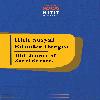Kadınların Okuyup Yazması Meselesi: “Lâ tuallimû’n-nisâe hattan” Hadisinin Râvîsine Cevap
“(Lâ tuallimû’n-nisâe hattan ﺎﻄﺧ ﺀﺎﺴﻨﻟﺍ ﺍﻮﻤﻠﻌﺗ ﻻ )" Hadisinin Râvîsine Cevap” başlığını taşıyan metnin de bu yoldaki gayretlerin ilgi çekici bir örneği olduğunu söyleyebiliriz. Kadınlara okuma yazma öğretilmemesini öngören ve “hadis” olarak nakledilen bir sözün hadis tekniği açısından kritiğini içeren yazı, Sebilürreşâd dergisinde imzasız olarak yayınlanmıştır. Yazıda hadis kaynakla- rı, şerhler, ricâl ve tabakât literatürü kullanılarak söz konusu ifadenin “hadis” olamayacağı ve bu ifadeye dayanarak hüküm binâ edilemeyeceği ortaya kon- muştur. Dipnotlar tarafımızdan konularak, atıf yapılan kaynaklarda ilgili yerler tespit edilmeye çalışılmış, ayrıca hadis tekniği açısından gerekli görülen açık- lama ve düzeltmelere de yer verilmiştir. Burada bir noktaya dikkat çekmek isteriz: Bu makaleyi kaleme alan isimsiz müellifimiz, bu metni oluştururken el- Azîmâbâdî’nin Avnu’l-Ma’bûd adlı Ebû Dâvud şerhinden oldukça faydalanmış; hatta bazı râvilerin tenkidi, Şifâ bnt. Abdullah ile ilgili “rukye” rivâyetinin de- ğerlendirilmesi ve İslam’ın yetiştirmiş olduğu kimi kadın şahsiyetlerden örneklendirme yapılması noktasında bir çalışmadır.
Anahtar Kelimeler:
Kadın, Kadın okur-yazarlığı, hadis
The Issue of Women’s Literacy : An Answer to Narrator of “Lâ tuallimû’n-nisâe hattan” Hadith
“(Lâ tuallimû’n-nisâe hattan ﺎﻄﺧ ﺀﺎﺴﻨﻟﺍ ﺍﻮﻤﻠﻌﺗ ﻻ)We can say that the text with the title ne Answer to the Hadith of the Hadith lı is an interesting example of the efforts in this way. The article, which envisages that women should not be taught to read and write, and which was transcribed as a reş hadith ün in terms of the hadith technique, was published as unsigned in the journal Sebilürreşâd. In the article, it was revealed that the expression in question could not be if hadith, by using the sources of hadith, commentary, rical and layer, and that this expression could not be made on the basis of this statement. The footnotes were prepared by us and the related sources were tried to be identified and also the explanations and corrections required by the hadith technique were included. We would like to draw attention to one point here: In this text, the unnamed author who wrote this article benefited from al-Azâmâbâdî's Avni metl-Ma isimbûd's commentary on Abu Dawud. even the criticism of some ravis, Şifâ bnt. It is a study on the evaluation of the mad rukye m narrative about Abdullah and the sampling of some of the personalities of Islam.
Keywords:
Women, female literacy, Hadis,
___
- Ahmed b. Hanbel, el-Musned, İstanbul, 1992, c. VI.
- ISSN: 2757-6957
- Yayın Aralığı: Yılda 2 Sayı
- Başlangıç: 2020
- Yayıncı: Hitit Üniversitesi
Sayıdaki Diğer Makaleler
“Enzelnâ el-Hadîd” [el-Hadid 57/25] İfadesinin Tercüme ve Yorumları Üzerine Bazı Değerlendirmeler
Bedâ Düşüncesi ve Şiî İmamet Tartışmalarındaki Yeri
İslam Düşüncesinde Aklîleşme Süreci Mutezilenin Oluşumu ve Ebu’l-Huzeyl Allaf
Kadınların Okuyup Yazması Meselesi: “Lâ tuallimû’n-nisâe hattan” Hadisinin Râvîsine Cevap
Zorunlu Varlığın Tikellere Dair Bilgisi Üzerine
Âdem ve Havva’nın Kitabı: Eski Ahit Apokrifasında Âdem ve Havva’nın Hayatı
Osmanlı’dan Cumhuriyet’e Geçiş Sürecinde Ahmet Ağaoğlu’nun Dinî Düşünceleri
